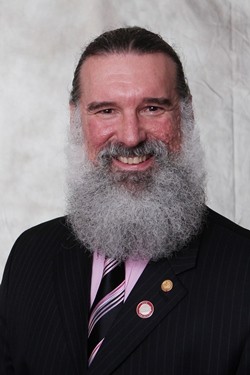User login
Federal health officials will be taking a closer look at the scope of health plan provider networks next year as they decide which plans can be sold on the federally run insurance exchange.
The greater focus on health plan networks comes after reports that many of the plans being sold on the Affordable Care Act’s insurance exchanges have too-narrow networks that have limited access to primary care physicians, area hospitals, and even oncologists and cancer centers.
In a March 14 letter to health plans, officials at the Centers for Medicare and Medicaid Services said that all plans sold in 2015 on the exchange run by the federal government will have to meet a "reasonable access" standard, meaning that they must have a sufficient number and type of providers in their networks to ensure that patients have access to all services without unreasonable delay. The letter doesn’t spell out exactly how the agency plans to define "unreasonable delay."
CMS will focus on areas in which health plans historically have had network adequacy problems, including hospital systems, mental health providers, oncology providers, and primary care providers.
The agency also set a minimum threshold for including "essential community providers," those providers who traditionally treat low-income patients or work in physician shortage areas, such as federally qualified health centers. In 2015, plans must include in their networks at least 30% of available essential community providers in their service area.
CMS officials also plan to monitor network adequacy throughout the year, including tracking complaints.
The American Medical Association, which has raised concerns about the use of narrow networks in the ACA plans, applauded the increased oversight as a "first step."
"Inadequate health plan networks can endanger patients’ health if they cannot access timely, convenient, quality care with their existing physicians and other familiar providers," said Dr. Ardis Dee Hoven, AMA president.
But physicians may have to wait until next year to see if the government’s steps will correct the problem.
Dr. Reid Blackwelder, president of the American Academy of Family Physicians, said he believes the intent of the CMS letter is to ensure robust provider networks, but there also appears to be some "wiggle room" for insurers. "Whether this letter moves that intent forward or not, we’ll probably have to wait and see," he said.
In a letter to CMS, the American College of Physicians urged additional requirements for insurers and more openness about how networks are designed.
Specifically, the ACP called on CMS to consider patient to physician ratios and the use of out-of-network providers when evaluating networks in addition to time and distance standards. The ACP also wants insurers to rely on performance measures that are based on national standards when assessing physicians for inclusion in their networks. The measures and methodology should also be transparent and understandable by physicians and patients alike, the group said.
The American Cancer Society Cancer Action Network is asking CMS to mandate a standardized exceptions process to allow patients to seek treatment from out-of-network physicians and hospitals when in-network providers are unavailable or too far away. And patients who qualify for the exemption should not have to pay higher out-of-network costs, said Laura Skopec, senior policy analyst for the American Cancer Society Cancer Action Network.
On Twitter @maryellenny
Federal health officials will be taking a closer look at the scope of health plan provider networks next year as they decide which plans can be sold on the federally run insurance exchange.
The greater focus on health plan networks comes after reports that many of the plans being sold on the Affordable Care Act’s insurance exchanges have too-narrow networks that have limited access to primary care physicians, area hospitals, and even oncologists and cancer centers.
In a March 14 letter to health plans, officials at the Centers for Medicare and Medicaid Services said that all plans sold in 2015 on the exchange run by the federal government will have to meet a "reasonable access" standard, meaning that they must have a sufficient number and type of providers in their networks to ensure that patients have access to all services without unreasonable delay. The letter doesn’t spell out exactly how the agency plans to define "unreasonable delay."
CMS will focus on areas in which health plans historically have had network adequacy problems, including hospital systems, mental health providers, oncology providers, and primary care providers.
The agency also set a minimum threshold for including "essential community providers," those providers who traditionally treat low-income patients or work in physician shortage areas, such as federally qualified health centers. In 2015, plans must include in their networks at least 30% of available essential community providers in their service area.
CMS officials also plan to monitor network adequacy throughout the year, including tracking complaints.
The American Medical Association, which has raised concerns about the use of narrow networks in the ACA plans, applauded the increased oversight as a "first step."
"Inadequate health plan networks can endanger patients’ health if they cannot access timely, convenient, quality care with their existing physicians and other familiar providers," said Dr. Ardis Dee Hoven, AMA president.
But physicians may have to wait until next year to see if the government’s steps will correct the problem.
Dr. Reid Blackwelder, president of the American Academy of Family Physicians, said he believes the intent of the CMS letter is to ensure robust provider networks, but there also appears to be some "wiggle room" for insurers. "Whether this letter moves that intent forward or not, we’ll probably have to wait and see," he said.
In a letter to CMS, the American College of Physicians urged additional requirements for insurers and more openness about how networks are designed.
Specifically, the ACP called on CMS to consider patient to physician ratios and the use of out-of-network providers when evaluating networks in addition to time and distance standards. The ACP also wants insurers to rely on performance measures that are based on national standards when assessing physicians for inclusion in their networks. The measures and methodology should also be transparent and understandable by physicians and patients alike, the group said.
The American Cancer Society Cancer Action Network is asking CMS to mandate a standardized exceptions process to allow patients to seek treatment from out-of-network physicians and hospitals when in-network providers are unavailable or too far away. And patients who qualify for the exemption should not have to pay higher out-of-network costs, said Laura Skopec, senior policy analyst for the American Cancer Society Cancer Action Network.
On Twitter @maryellenny
Federal health officials will be taking a closer look at the scope of health plan provider networks next year as they decide which plans can be sold on the federally run insurance exchange.
The greater focus on health plan networks comes after reports that many of the plans being sold on the Affordable Care Act’s insurance exchanges have too-narrow networks that have limited access to primary care physicians, area hospitals, and even oncologists and cancer centers.
In a March 14 letter to health plans, officials at the Centers for Medicare and Medicaid Services said that all plans sold in 2015 on the exchange run by the federal government will have to meet a "reasonable access" standard, meaning that they must have a sufficient number and type of providers in their networks to ensure that patients have access to all services without unreasonable delay. The letter doesn’t spell out exactly how the agency plans to define "unreasonable delay."
CMS will focus on areas in which health plans historically have had network adequacy problems, including hospital systems, mental health providers, oncology providers, and primary care providers.
The agency also set a minimum threshold for including "essential community providers," those providers who traditionally treat low-income patients or work in physician shortage areas, such as federally qualified health centers. In 2015, plans must include in their networks at least 30% of available essential community providers in their service area.
CMS officials also plan to monitor network adequacy throughout the year, including tracking complaints.
The American Medical Association, which has raised concerns about the use of narrow networks in the ACA plans, applauded the increased oversight as a "first step."
"Inadequate health plan networks can endanger patients’ health if they cannot access timely, convenient, quality care with their existing physicians and other familiar providers," said Dr. Ardis Dee Hoven, AMA president.
But physicians may have to wait until next year to see if the government’s steps will correct the problem.
Dr. Reid Blackwelder, president of the American Academy of Family Physicians, said he believes the intent of the CMS letter is to ensure robust provider networks, but there also appears to be some "wiggle room" for insurers. "Whether this letter moves that intent forward or not, we’ll probably have to wait and see," he said.
In a letter to CMS, the American College of Physicians urged additional requirements for insurers and more openness about how networks are designed.
Specifically, the ACP called on CMS to consider patient to physician ratios and the use of out-of-network providers when evaluating networks in addition to time and distance standards. The ACP also wants insurers to rely on performance measures that are based on national standards when assessing physicians for inclusion in their networks. The measures and methodology should also be transparent and understandable by physicians and patients alike, the group said.
The American Cancer Society Cancer Action Network is asking CMS to mandate a standardized exceptions process to allow patients to seek treatment from out-of-network physicians and hospitals when in-network providers are unavailable or too far away. And patients who qualify for the exemption should not have to pay higher out-of-network costs, said Laura Skopec, senior policy analyst for the American Cancer Society Cancer Action Network.
On Twitter @maryellenny

